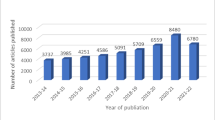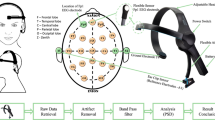Abstract
Adaptive minimum variance based beamformers (MVB) have been successfully applied to magnetoencephalogram (MEG) and electroencephalogram (EEG) data to localize brain activities. However, the performance of these beamformers falls down in situations where correlated or interference sources exist. To overcome this problem, we propose indirect dominant mode rejection (iDMR) beamformer application in brain source localization. This method by modifying measurement covariance matrix makes MVB applicable in source localization in the presence of correlated and interference sources. Numerical results on both EEG and MEG data demonstrate that presented approach accurately reconstructs time courses of active sources and localizes those sources with high spatial resolution. In addition, the results of real AEF data show the good performance of iDMR in empirical situations. Hence, iDMR can be reliably used for brain source localization especially when there are correlated and interference sources.










Similar content being viewed by others
Notes
BrainStorm, Matlab Toolbox. http://neuroimage.usc.edu/brainstorm/2017.
A point of the posterior root of the zygomatic arch lying immediately in front of the upper end of the tragus.
References
Baillet S, Mosher JC, Leahy RM (2001) Electromagnetic brain mapping. IEEE Signal Process Mag 18(6):14–30
Berg P, Scherg M (1994) A fast method for forward computation of multiple-shell spherical head models. Electroencephalogr Clin Neurophysiol 90(1):58–64
Brookes M, Stevenson C, Barnes G, Hillebrand A, Simpson M, Francis S, Morrisa P (2007) Beamformer reconstruction of correlated sources using a modified source model. Neuroimage 34(4):1454–1465
Brookes MJ, Vrba J, Robinson SE, Stevenson CM, Peters AP, Barnes GR, Hillebrand A, Morris PG (2008) Optimising experimental design for MEG beamformer imaging. Neuroimage 39(4):1788–1802
Chen YS, Cheng CY, Hsieh JC, Chen LF (2006) Maximum contrast beamformer for electromagnetic mapping of brain activity. IEEE Trans Biomed Eng 53(9):1765–1774
Chowdhury RA, Younes Z, Tanguy H, Marcel H, Eliane K, Jean-Marc L, Christophe. G (2015) MEG–EEG information fusion and electromagnetic source imaging: from theory to clinical application in epilepsy. Brain Topogr 18(6):785–812
Dai Y, Zhang W, Dickens DL, He B (2012) Source connectivity analysis from MEG and its application to epilepsy source localization. Brain Topogr 25(2):157–166
Dalal S, Sekihara K, Nagarajan S (2006) Modified beamformers for coherent source region suppression. IEEE Trans Biomed Eng 53(7):1357–1363
Dinh C, Strohmeier D, Luessi M, Güllmar DG, Baumgarten D, Haueisen J, Hamalainen MS (2015) Real-time MEG source localization using regional clustering. Brain Topogr 28(6):771–784
Gorodnitsky J, George, Rao B (1995) Neuromagnetic source imaging with FOCUSS: a recursive weighted minimum norm algorithm. Electroencephalogr Clin Neurophysiol 95(4)231–251
Greenblatt RE, Ossadtchi A, Pflieger ME (2005) Local linear estimators for the bioelectromagnetic inverse problem. IEEE Trans Signal Process 53(9):3403–3412
Haufe S, Arne E (2016) A simulation framework for benchmarking EEG-based brain connectivity estimation methodologies. Brain Topogr. https://doi.org/10.1007/s10548-016-0498-y
Huang M-X, Shih JJ, Lee RR, Harrington DL, Thoma RJ, Weisend MP, Hanlon F, Paulson KM, Li T, Martin K, Miller GA, Canive JM (2004) Commonalities and differences among vectorized beamformers in electromagnetic source imaging. Brain Topogr 16(3):139–158
Hui HB, Pantazis D, Bressler SL, Leahy RM (2010) Identifying true cortical interactions in MEG using the nulling beamformer. Neuroimage 49(4):3161–3174
Hyvärinen A, Karhunen J, Oja E (2004) Independent component analysis, vol 46. Wiley, New York
Jonmohamadi Y, Poudel G, Innes C, Weiss D, Krueger R, Jones R (2014) Comparison of beamformers for EEG source signal reconstruction. Biomed Signal Process Control 14:175–188
Kimura T, Kako M, Kamiyama H, Ishiyama A, Kasai N, Watanabe Y (2007) Inverse solution for time-correlated multiple sources using Beamformer method, vol 1300. International Congress Series, pp 417–420
Mills T, Marc L, Sandra NM, Margot JT, Maher AQ (2012) Techniques for detection and localization of weak hippocampal and medial frontal sources using beamformers in MEG. Brain Topogr 25(3):248–263
Moiseev A, Herdman AT (2013) Multi-core beamformers: derivation, limitations and improvements. Neuroimage 71:135–146
Moiseev A, Gaspar JM, Schneider JA, Herdman AT (2011) Application of multi-source minimum variance beamformers for reconstruction of correlated neural activity. NeuroImage 58(2):481–496
Mosher JC, Leahy RM (1992) Multiple dipole modeling and localization from spatiotemporal MEG data. IEEE Trans Biomed Eng 39(6):541–557
Mosher JC, Leahy RM (1998) Recursive MUSIC: a framework for EEG and MEG source localization. IEEE Trans Biomed Eng 45(11):1342–1354
Mosher JC, Leahy RM (1999) Source localization using recursively applied and projected (RAP) MUSIC. IEEE Trans Signal Process 47(2):332–340
Pascual-Marqui RD (2002) Standardized low resolution brain electromagnetic tomography (sLORETA): technical details. Methods Find Exp Clin Pharmacol 24:5–12
Popescu M, Popescu E, Chan T, Blunt S, Lewine J (2008) Spatial-temporal reconstruction of bilateral auditory steady state responses using MEG beamformers. IEEE Trans Biomed Eng 55(3):1092–1102
Quraan M, Cheyne D (2010) Reconstruction of correlated brain activity with adaptive spatialfilters in MEG. NeuroImage 49(3):2387–2400
Santos EL, Zoltowski MD, Rangaswamy M (2007) Indirect dominant mode rejection: a solution to low sample support beamforming. IEEE Trans Signal Process 55(7):3283–3293
Sekihara K, Nagarajan SS (2008) Adaptive spatial filters for electromagnetic brain imaging. Springer, Berlin
Sekihara K, Nagarajan S, Poeppel D, Marantz A, Miyashita Y (2001) Reconstructing spatio-temporal activities of neural sources using an MEG Vector beamformer technique. IEEE Trans Biomed Eng 48(7):760–771
Sekihara K, Nagarajan S, Poeppel D, Marantz A (2004) Asymptotic SNR of scalar and vector minimum-variance beamformers for neuromagnetic source reconstruction. IEEE Trans Biomed Eng 51(10):1726–1734
Shahbazi F, Ewald A, Nolte G (2015) Self-consistent MUSIC: an approach to the localization of true brain interactions from EEG/MEG data. Neuroimage 112(6):299–309
Tadel F, Baillet S, Mosher JC, Pantazis D, Leahy RM (2011) Brainstorm: a user-friendly application for MEG/EEG analysis. Comput Intell Neurosci. https://doi.org/10.1155/2011/879716
Tikhonov AN, Arsenin VY (1997) Solutions of Ill-posed problems. Wiley, New York, NY
Uutela K, Hamalainen M, Somersalo E (1999) Visualization of magnetoencephalographic data using minimum current estimates. Neuroimage 10(2):173–180
Van Veen B, van Drongelen W, Yuchtman M, Suzuki A (1997) Localization of brain electrical activity via linearly constrained minimum variance spatial filtering. IEEE Trans Biomed Eng 44(9):867–880
Xiang Y, Peng D, Yang Z (2015) Blind source separation: dependent component analysis. Springer, New York
Xu XL, Xu B, He B (2004) An alternative subspace approach to EEG dipole source localization. Phys Med Biol 49:327–343
Yeung N, Bogacz R, Holroyd CB, Cohen JD (2004) Detection of synchronized oscillations in the electroencephalogram: an evaluation of methods. Psychophysiology 41(6)822–832
Acknowledgements
The authors would like to acknowledge Elizabeth Bock, Esther Florin, Peter Donhauser, Francois Tadel and Sylvain Baillet from McGill University for providing the rest and AEF dataset.
Author information
Authors and Affiliations
Corresponding author
Additional information
Handling Editor: Christoph M. Michel.
Rights and permissions
About this article
Cite this article
Jafadideh, A.T., Asl, B.M. Spatio-temporal Reconstruction of Neural Sources Using Indirect Dominant Mode Rejection. Brain Topogr 31, 591–607 (2018). https://doi.org/10.1007/s10548-018-0645-8
Received:
Accepted:
Published:
Issue Date:
DOI: https://doi.org/10.1007/s10548-018-0645-8




